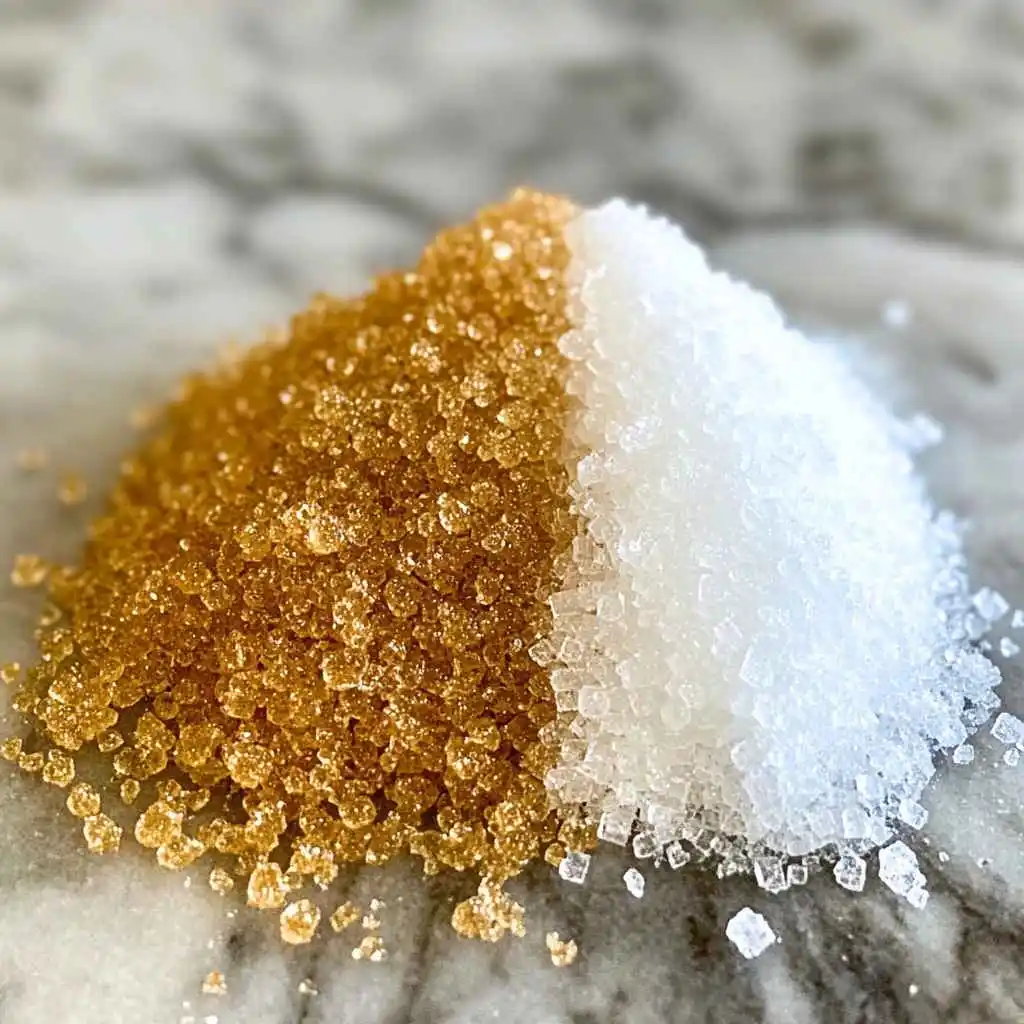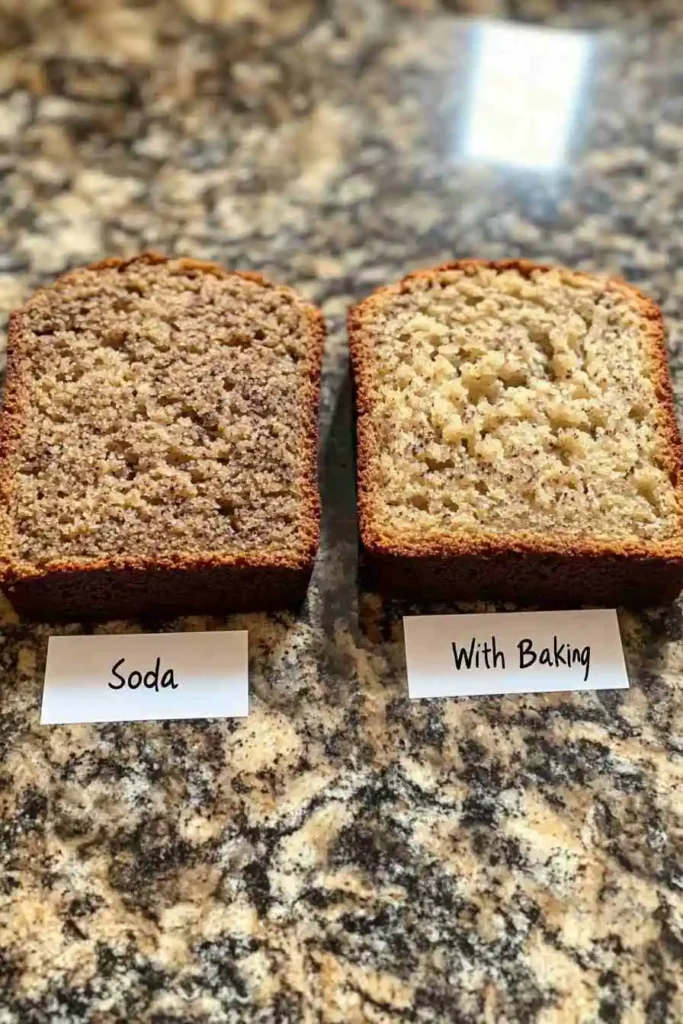What Does Brown Sugar Do for Bread?
What does brown sugar do for bread? This is a common question among bakers and home cooks who want to understand the science behind using brown sugar in bread recipes. Many assume sugar is only for sweetness, but brown sugar has a major impact on moisture, texture, fermentation, and crust development.
Whether you’re making a classic sandwich loaf or a banana bread recipe, using brown sugar can improve flavor and softness. But how exactly does brown sugar affect the structure and rising process of bread? And what makes it different from white sugar?
In this detailed guide, we’ll explore what brown sugar does for bread, how it interacts with yeast, and why it’s a great addition to many bread recipes.
Table of Contents
How Brown Sugar Affects Bread: What Does Brown Sugar Do for Bread Compared to White Sugar?
The Science Behind Brown Sugar in Bread Baking
If you’ve ever wondered, “What does brown sugar do for bread?” the answer lies in its composition. Brown sugar is simply white sugar mixed with molasses, which gives it extra moisture and a deeper caramel flavor.
Here’s how brown sugar affects bread:
- Enhances moisture retention – Brown sugar holds onto water better than white sugar, keeping bread soft.
- Improves texture – The sugar’s moisture content contributes to a tender and chewy crumb.
- Creates a golden crust – The extra sugar helps with caramelization, producing a darker, crispier crust.
For more details, check out our brown sugar in bread guide, which compares different sugar types in baking.
What Does Brown Sugar Do for Bread Fermentation and Yeast?
Does Brown Sugar Feed Yeast?
Many bakers ask, “What does brown sugar do for bread yeast fermentation?” Yeast needs sugar to produce carbon dioxide, which makes the dough rise. Brown sugar, like white sugar, serves as fuel for yeast, but molasses alters the process slightly.
Molasses contains trace minerals, such as potassium and calcium, which can slow down yeast fermentation slightly. However, it also enhances the flavor of the bread. The key effects of brown sugar on yeast include:
- Yeast activity remains strong – Brown sugar works similarly to white sugar in activating yeast.
- Fermentation may take slightly longer – The added moisture can slow the rising process.
- Creates a richer flavor – The molasses in brown sugar adds depth and complexity to bread.
Want to experiment with sugar variations? Try substituting brown sugar in bread for a unique twist.
What Does Brown Sugar Do for Bread Texture and Moisture?
Brown Sugar vs. White Sugar: Which One is Better?

A common question among bakers is, “What does brown sugar do for bread compared to white sugar?” The biggest differences are in moisture retention, texture, and crust development.
| Feature | Brown Sugar | White Sugar |
|---|---|---|
| Moisture Retention | High | Low |
| Crumb Texture | Soft, tender | Light, airy |
| Flavor | Rich, caramel-like | Pure sweetness |
| Crust Color | Dark golden-brown | Lighter golden-brown |
For more tips on sugar swaps in baking, check out What Can I Substitute for Brown Sugar in Banana Bread?.
What Does Brown Sugar Do for Bread Crust Formation?
Caramelization and Browning
Brown sugar enhances the Maillard reaction, which creates a darker and crispier crust. Because brown sugar contains more moisture and natural sugars, it results in a deeper golden-brown crust with a slight caramel flavor.
If you prefer a bread loaf with a rich crust, using brown sugar instead of white sugar is a great choice. For an example of how brown sugar affects crust development, try our powdered sugar in banana bread recipe.
Nutritional Benefits of Brown Sugar in Bread: Is It Healthier?
Does Brown Sugar Offer Any Health Benefits?
Many people ask, “What does brown sugar do for bread in terms of health benefits?” Brown sugar contains trace amounts of calcium, potassium, and iron, but the differences in nutritional value compared to white sugar are minimal.
The main advantage of using brown sugar in bread is its ability to retain moisture and enhance flavor. It makes bread softer and helps it stay fresh longer.
What Happens If You Substitute Brown Sugar in Bread Recipes?

Can You Replace Brown Sugar with White Sugar?
Yes, but expect texture and flavor differences. Bread made with white sugar will be drier and have a milder taste, whereas brown sugar creates a richer, softer loaf.
If you’re out of brown sugar, you can substitute it with:
- Honey or maple syrup – Adds moisture and sweetness.
- Coconut sugar – Provides a similar caramel-like flavor.
- White sugar + molasses – A quick way to create homemade brown sugar.
Check out What Can I Substitute for Brown Sugar in Banana Bread? for more sugar alternatives.
FAQs: What Does Brown Sugar Do for Bread?
Why do you put bread in brown sugar?
Placing a piece of bread in brown sugar keeps it soft. Brown sugar can harden over time, but the moisture from the bread prevents it from clumping.
What happens if you use brown sugar instead of white in bread?
Bread made with brown sugar will be softer, more moist, and have a richer flavor compared to bread made with white sugar. The crust may also be darker.
What does brown sugar do to yeast in bread?
Brown sugar feeds yeast like white sugar does, but the molasses content may slightly slow fermentation.
How does brown sugar change the texture of bread?
Brown sugar makes bread softer and more tender, helping to retain moisture.
What are the benefits of adding brown sugar to bread?
The main benefits include enhanced flavor, improved texture, and better moisture retention.
Conclusion: What Does Brown Sugar Do for Bread? and Why Should You Use It?
So, what does brown sugar do for bread? It plays a crucial role in enhancing moisture, texture, and flavor, making it an essential ingredient in many bread recipes. The natural molasses content in brown sugar adds a rich, deep sweetness while helping to retain moisture, resulting in softer and more tender bread.
Beyond improving texture, what does brown sugar do for bread in terms of appearance? It contributes to crust caramelization, giving the bread a beautiful golden-brown color and a slightly crisp outer layer. This caramelization not only enhances the bread’s visual appeal but also adds a subtle depth of flavor that elevates each bite.
In addition to its moisture-retaining and caramelizing properties, brown sugar also feeds the yeast, promoting a better rise and improved structure in certain bread recipes. So, next time you’re baking, remember what brown sugar does for bread—it enhances taste, texture, and overall quality, making every loaf more delicious and satisfying!
If you want to explore more about baking, check out:
Now, go ahead and bake a loaf with brown sugar—you’ll love the difference!

